The history of Indigenous Australians is a vitally important part of the history of Victoria and Australia. It is something that nowhere near enough Australians, and I include myself in this, know enough about. It is a truly ancient history dating back roughly 70 000 years, making Indigenous Australians pretty much the oldest continuing culture in the world. There are Indigenous sites across Australia, many of which are thousands of years old, and if these were in Europe they’d be celebrated and visited by millions, even in places where there isn’t a lot to actually see. In Australia, however, they can be very hard to find. I’ve lived in and around Melbourne my whole life and I work in the heritage field, but I’d never even heard of the earth rings just out of Sunbury until they were part of a National Trust Heritage Festival tour this year. I jumped at the chance to visit and find out more.
I’d like to pause here to say that I am aware that as a non Indigenous person writing Indigenous history can be problematic. This post is intended to encapsulate the possible history of the site as was explained by a Wurundjeri Elder on the tour, and I claim no more than that. The rings are just so fascinating that I want to make sure people know about them and to help ensure that Indigenous history is a part of the history of Victoria.
I’d also like to say that the rings don’t show up amazingly well in photos, but I’m hoping the pictures will at least give you an idea of what I’m talking about. You can certainly see them when you’re on the site.
The rings are earthwork formations and can be found just out of Sunbury, which is an hour or so outside of Melbourne. The landscape has been farmed since 1842, but is slowly being reclaimed, and is surrounded by the curve of Jackson’s Creek. The land is being looked after by the Wurundjeri Tribe Council, using a mix of traditional and modern methods. You can see some general photos of the land and wildlife below.
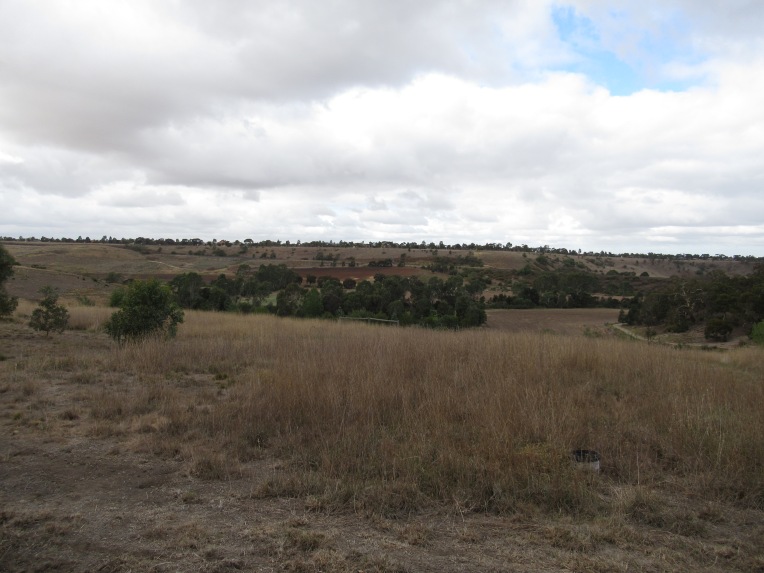

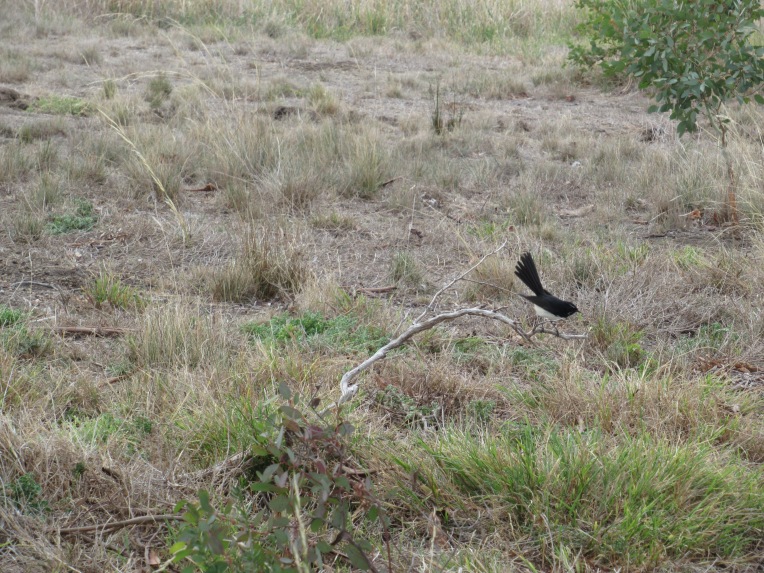
 The current site is 13 hectares, but it might be expanding as negotiations are currently in train to give the land council more land as part of another development.
The current site is 13 hectares, but it might be expanding as negotiations are currently in train to give the land council more land as part of another development.
Some of the land was owned by Salesian College, which you can see in the distance below.
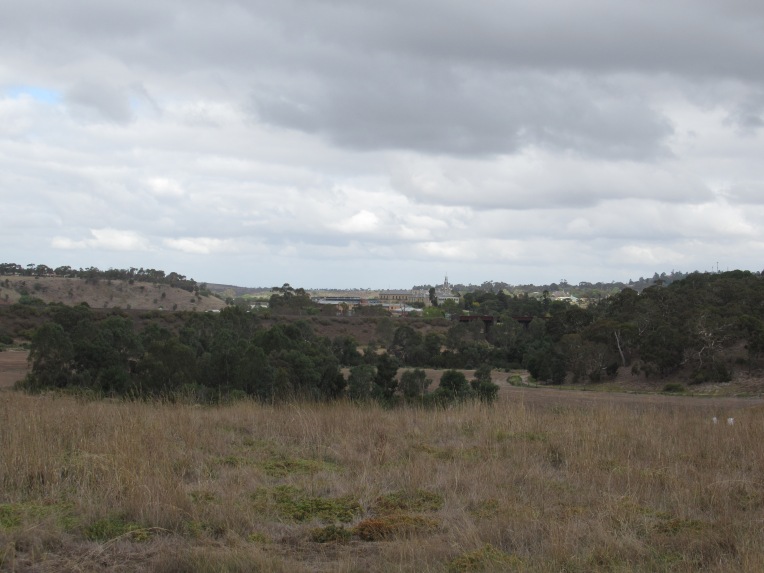
The Wurundjeri Tribe Council has begun revegetating the land, planting roughly 3000 trees and other plants. They have also cleared an extraordinary amount of weeds, including a lot of box thorn. They are using burning to help rejuvenate the land to bring back the native grasses and plants. Currently pasture grasses dominate the site, as you can see above. The smoke helps to stimulate seeds beneath the ground and regular small burns make it easier for native bushes and grasses to come back as the pasture grasses don’t regrow as easily if they are burnt regularly. You can see what I believe is an everlasting daisy which has come up below.
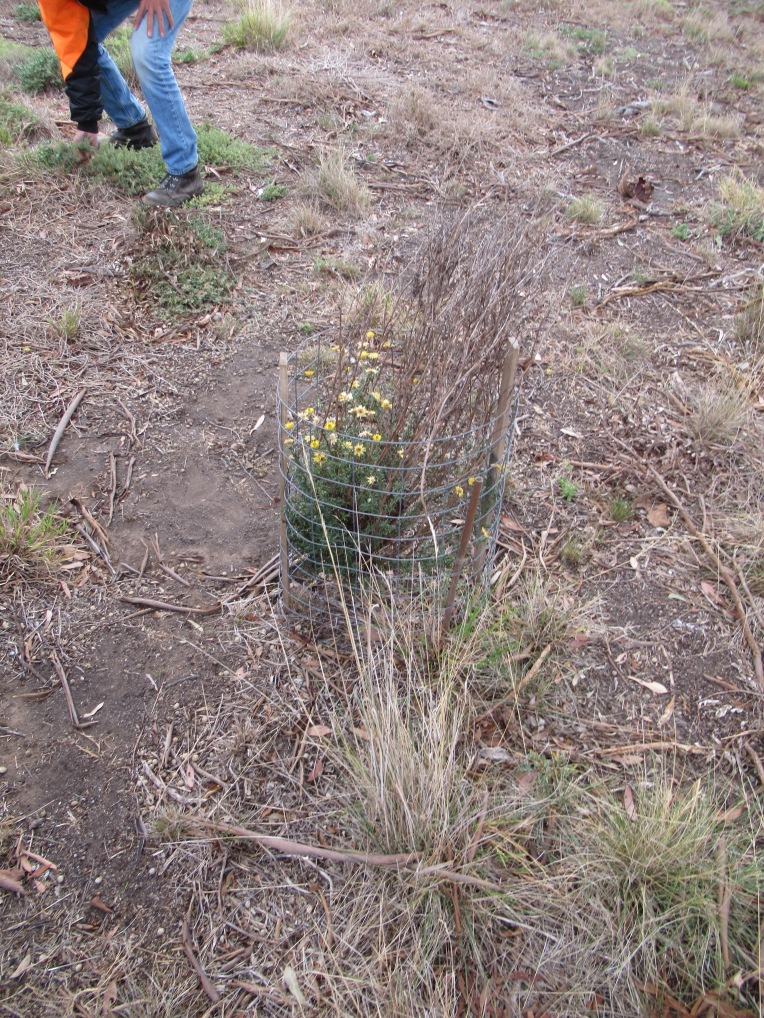
While there would have been some trees originally, like the ones below, this area would have been a significant grassland.

The Wurundjeri Tribe Council land managers have also been trying to build up the quality of the soil by raking together the leaves etc and letting them catch silt after rain before planting.
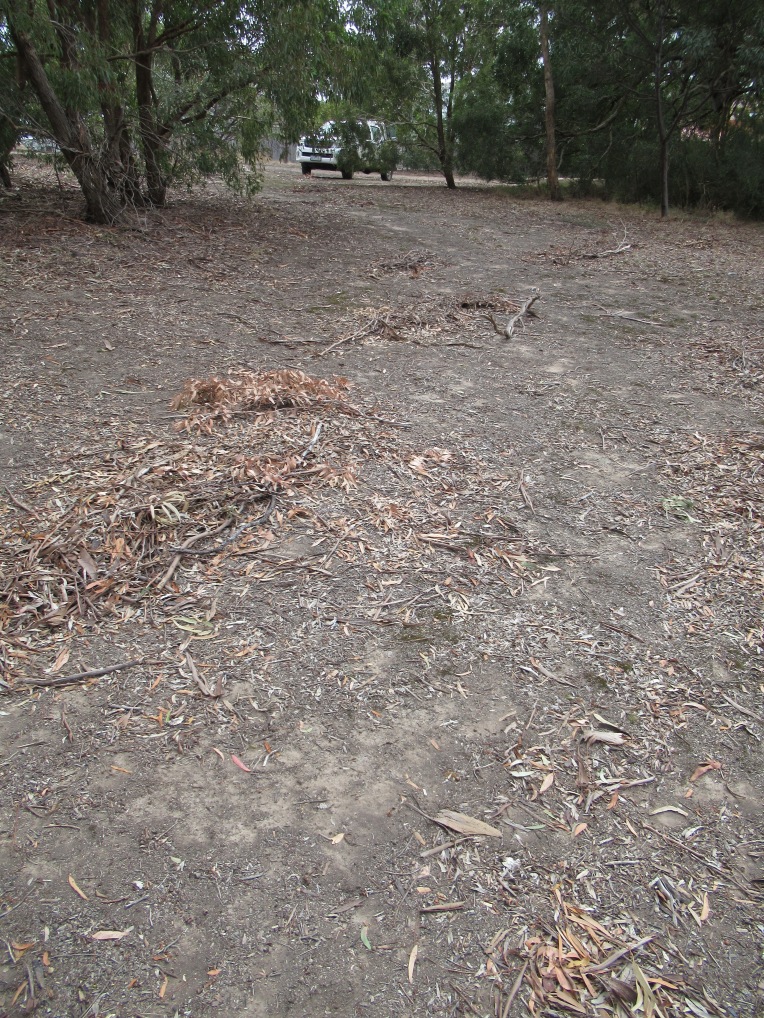
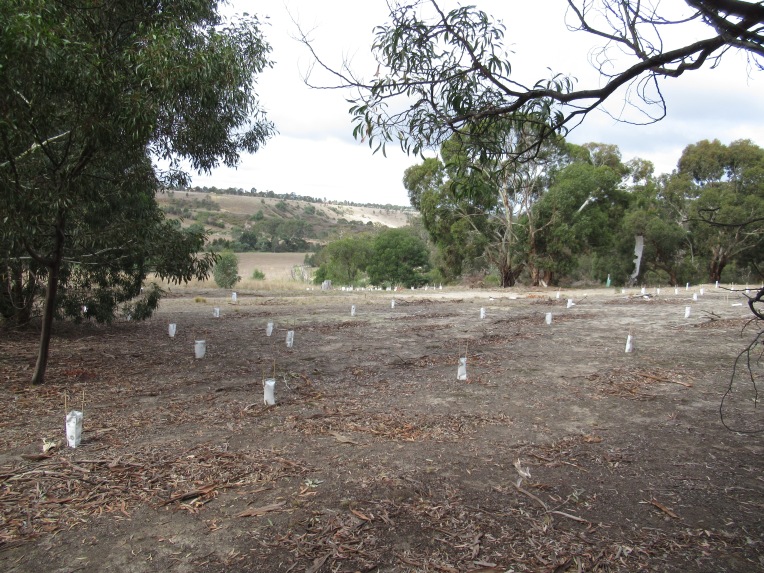
So, that is the overall site, but what about the rings themselves. Development actually plays a key part in the history of the rings. No one knew the rings were there until a development went up on the edge of the reserve in the 1970s and they were re-discovered.
They are definitely man made and probably date to at least a thousand years, but in the invasion of western settlers in the 1800s the local Indigenous population was so decimated that the oral history of the rings was lost. They were dug out by hand with digging sticks, with nothing brought in from outside
On the site that I visited there are three rings, though there are others in the area. Unfortunately no one knows exactly what the rings were used for, only one has been archaeologically investigated. The Wurundjeri don’t want these sacred sites dug up, even for archaeology. Rings in NSW are thought to have been burial places, but there is no evidence of this for the Sunbury rings.
The first of the rings is in the worst condition. It has been too open to the public interference, especially from motorbikes. There is also a bad rabbit problem and a recent lack of rain has caused problems as well (this extends to the whole site)
The first ring was the one that was rediscovered in the 1970s with the nearby development. Once this one was re-found it was realised what the other two just over the hill were as well. You can see the ring in the photo below.

 It has been fenced off now, but even this doesn’t always work as you can see from the drain in the photo below.
It has been fenced off now, but even this doesn’t always work as you can see from the drain in the photo below.
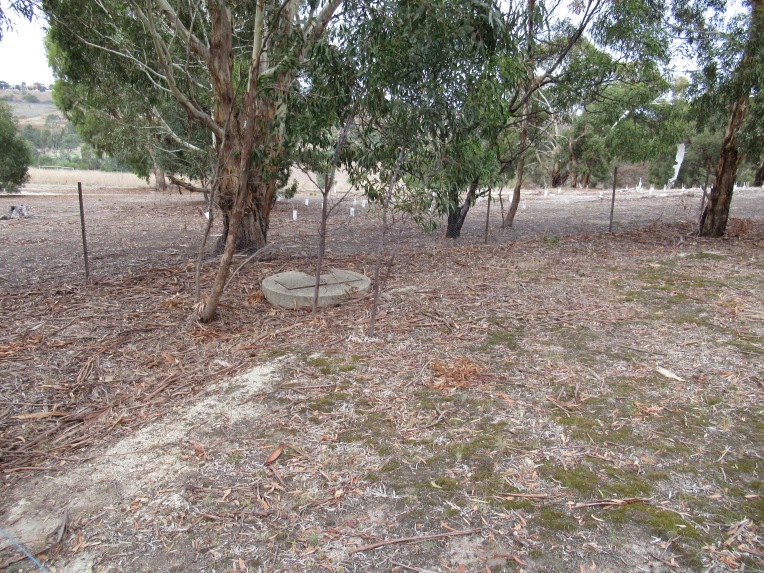 The ring was dug out from the middle and the earth was piled up around.
The ring was dug out from the middle and the earth was piled up around.
The second and third rings are in better condition and it was the second one that was excavated in the 1970s. When the ring was excavated it had a pile of stones in the middle, it was thought that there might be burials underneath. There wasn’t, and it is thought that the stones were removed when the ring was dug (there is a lot of rock in the local soil) and piled in the middle. You can see the remains of the stones in the photos below.
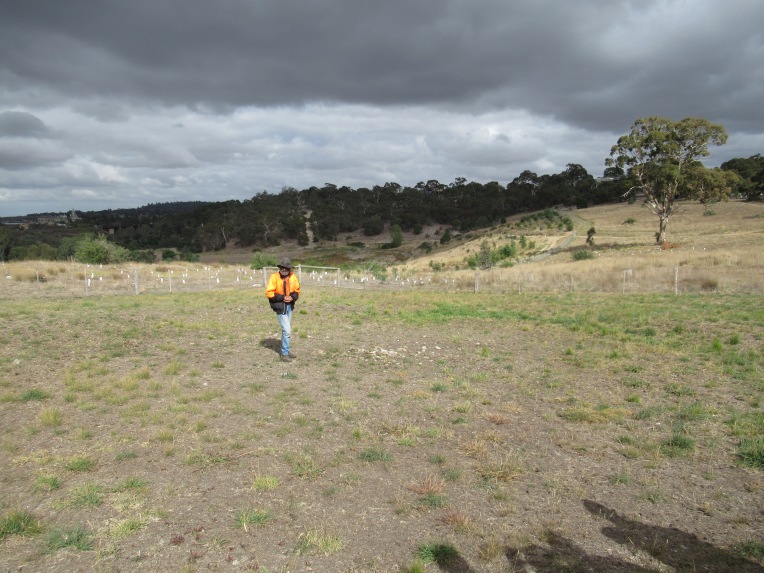 The third ring is a little father up the hill and is actually a double ring. There is a larger ring with a smaller ring inside it.
The third ring is a little father up the hill and is actually a double ring. There is a larger ring with a smaller ring inside it.


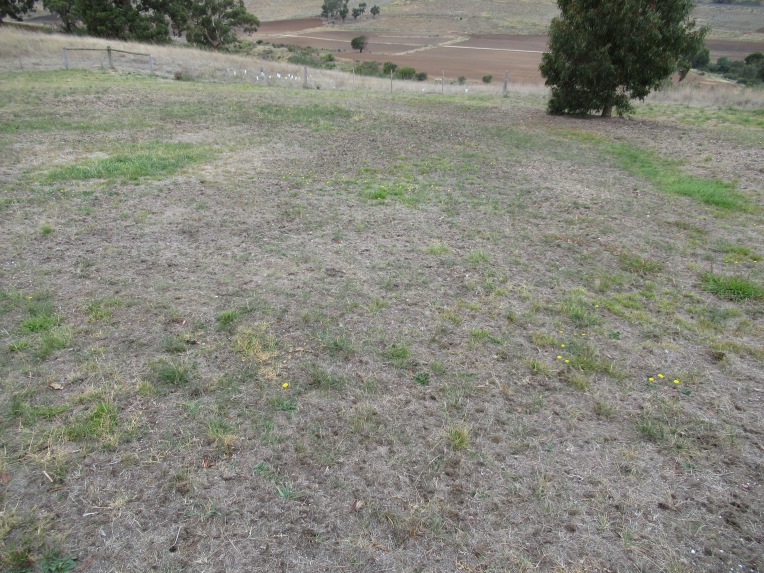
While it is not, currently, possible to know exactly what the rings were used for it is hoped that it will be in the future. New information is being discovered in diaries and old documentation all the time as for the first time researchers (especially Indigenous ones) really begin to look. The current theory is that the rings might have been used for marriage. You can’t see the first ring from the second and visa-versa and the idea is that the men would have got prepared in one and the women in the other and they would have joined each other in the double ring and actually married there. There is a flat section on the double ring where someone could have officiated from.
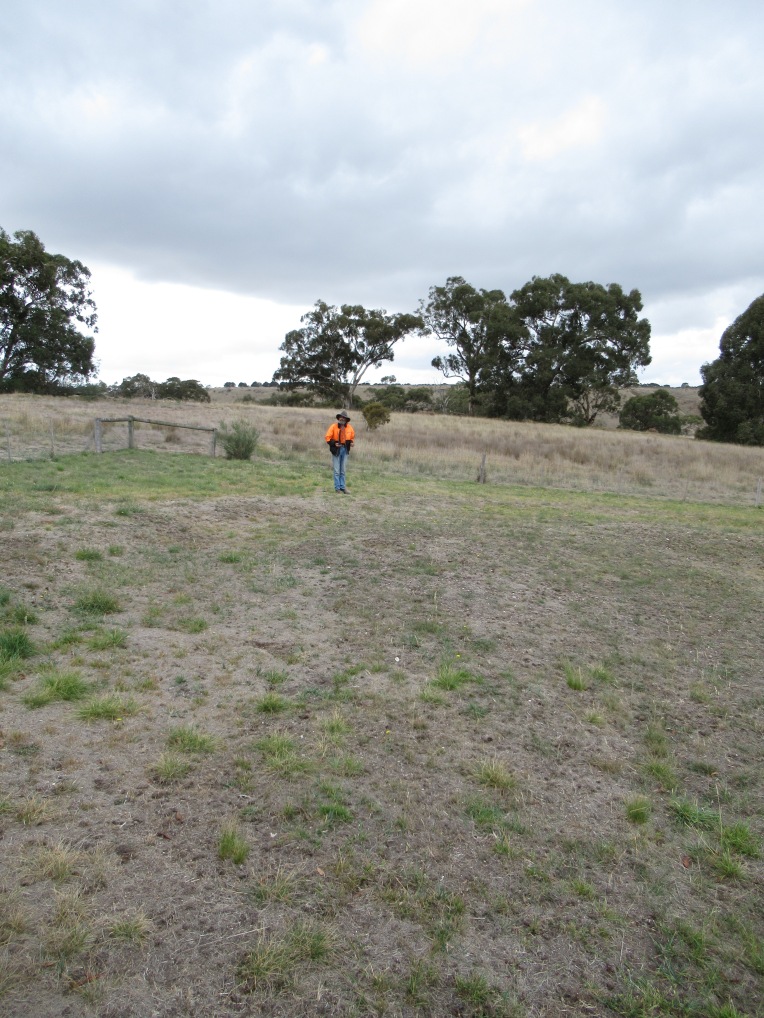 While at the moment this is only a theory, it is one that seems to make sense. Hopefully more answers will be discovered.
While at the moment this is only a theory, it is one that seems to make sense. Hopefully more answers will be discovered.
I am not in the least superstitious, but the rings do have a certain atmosphere. The atmosphere is of a place that has been used for a purpose for a very very long time, a land that has been shaped by human hands for time out of mind. It reminded me a little of the Hill of Tara in Ireland, a site that dates back thousands of years (which is perfectly possible for the rings). This site and others like it should be part of the education of every Victorian child the way Eureka and the gold rush is. Places like the Wurundjeri rings and Indigenous history in general needs to become an integral part of the overt history of Victoria rather than the background or subvert history. Indigenous history needs to become part of the historical consciousness of Australia, as important (if not more important) than the First Fleet and the ANZAC legends. It should be celebrated that we have this incredible history stretching back for thousands and thousands of years, and if doing this means coming to terms with and acknowledging how close European invasion came to destroying it all (much of the time quite intentionally) then so much the better.
References: Site visit 2018.
https://www.wurundjeri.com.au/services/natural-resource-management/
The photos are all mine.

Fascinating article, thank you!
LikeLike
glad you found it interesting, thank you
LikeLike
Excellent work.
Thank you very much.
LikeLike
thanks, glad you found it interesting
LikeLike
I have included your blog in INTERESTING BLOGS in FRIDAY FOSSICKING at
https://thatmomentintime-crissouli.blogspot.com/2018/05/friday-fossicking-25th-may-2018.html
Thanks, Chris
LikeLike
Thanks I appreciate it
LikeLiked by 1 person
You’re welcome..
LikeLike